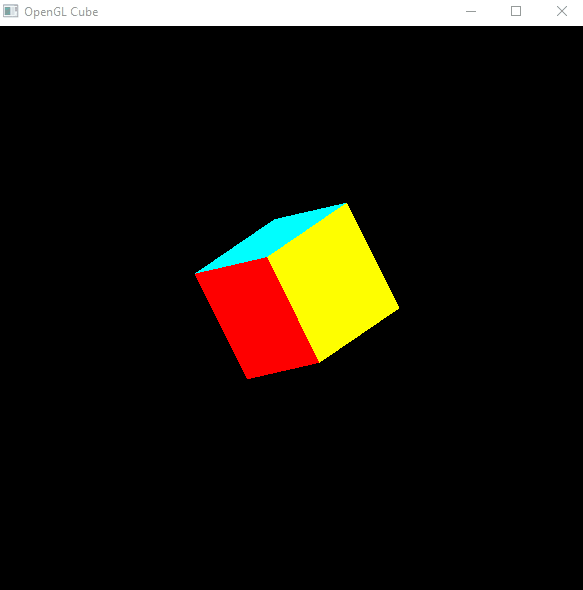OpenGL .exe from scratch
I've wanted for a while to make an .exe completely from scratch, and I finally got to do that this past month. The program opens a window and displays a spinning cube.
"From scratch" is a bit vague, but this is what I mean here:
- Program (written in C) writes the .exe file format and leaves room for x86 assembly/data to be added
- x86 is written manually and assembled to bytecode; I used this assembler, but will write my own simple assembler soon for educational purposes
- System (Windows) and OpenGL calls are done through assembly (don't worry, I did not rewrite OpenGL in x86!). Note that I did not use any OpenGL-adjacent libraries like glfw, glm, etc.
I started by making a small executable that just returned a value (e.g. 1234). For the most part I used the PE Format webpage which is maintained by Microsoft, along with some online resources like PE 101.
After that it was time to move on to the OpenGL demo. I made a quick prototype in C and then rewrote it in x86. After some debugging, I finally got this to appear:

You can (hopefully) recreate this on your end, too! Start by downloading these files to the same folder:
- og_opengl.c; the main C program (please excuse the giant binary arrays!)
- import_table.c; auto-generated code which writes to the .exe's import table
- run_output_exe.py; a Python script that compiles og_opengl.c, runs it to generate the output .exe, and then runs that output .exe
python run_output_exe.py to automate the process.
Additionally, the following x86 was written manually, "cleaned" of comments using a Python script, and then assembled using an online assembler to produce the binary arrays in og_opengl.c:
- the window callback; output goes in og_opengl.c --> text_raw_wndproc[]
- the 3D rotation function; output goes in og_opengl.c --> text_raw_transform[]
- the main function; output goes in og_opengl.c --> text_raw_main[]
Some tools I used:
- Visual Studio on the command line (
clcommand) for compiling everything - Python for automation and for generating some C code (i.e. the import table)
- HxD for viewing the raw hex contents of my output .exe
- PE Tools and PE File Browser to see what parts of the .exe were formatted correctly/incorrectly
- OllyDbg to step through the program and examine the values of registers